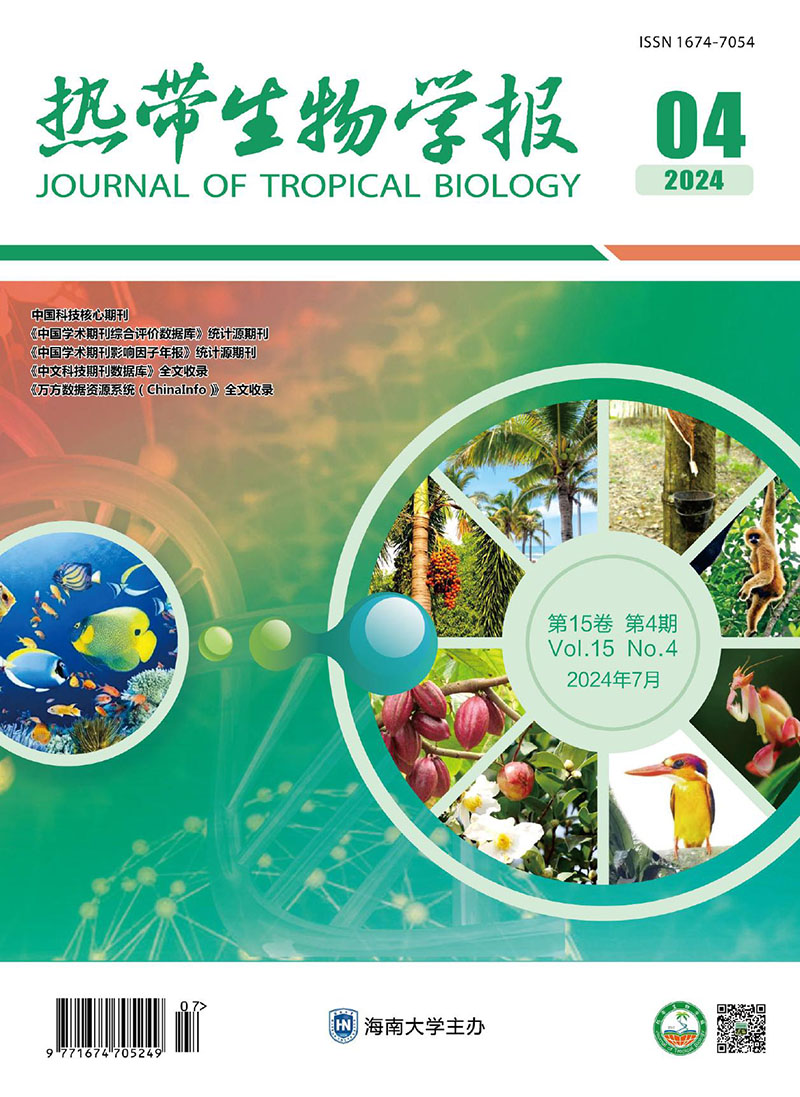|
[1]
|
陈亮,虞富莲,童启庆.关于茶组植物分类与演化的讨论[J].茶叶科学, 2000, 20(2):89-94. |
|
[2]
|
杨如兴,陈芝芝,张磊,等.福建野生茶树种质资源保护与利用[J].茶叶学报, 2017, 58(3):96-101. |
|
[3]
|
牛素贞,赵支飞,宋勤飞,等.贵州野生茶树种质资源立地环境多样性[J].浙江农业学报, 2020, 32(7):1223-1232. |
|
[4]
|
赵东伟.大叶茶(Camellia sinensis var. assamica)的命名、模式及自然分布[J].茶叶科学,2022,42(4):491-499. |
|
[5]
|
牛素贞,宋勤飞,樊卫国.贵州野生茶树立地土壤养分分析[J].西南农业学报, 2014, 27(4):1626-1631. |
|
[6]
|
罗吉凤,龙春林,周翊兰.云南几种野生茶生态环境与引种试验的初步研究[J].武汉植物学研究, 2001, 19(1):39-46. |
|
[7]
|
郭彤,王湘平,詹梓金.福建野生茶的生化成分及其利用前景[J].福建茶叶, 1997, 19(1):54-56. |
|
[8]
|
刘肖冰,侯萍,陈冬梅.海南五指山茶资源现状及产业前景[J].农业工程技术, 2018, 38(14):14. |
|
[9]
|
古小玲,鲁成银,郑丽娟.五指山市茶产业发展现状、存在问题与对策[J].热带农业工程, 2017, 41(S1):72-75. |
|
[10]
|
苏凡,杨小波,李东海,等.五指山水满茶的茶多酚、总黄酮含量与抗氧化活性研究[J].热带作物学报,2018, 39(4):675-680. |
|
[11]
|
张国民,马俊蓉,王庆忠.用正交实验法选择HPLCMS最佳条件对茶多酚快速定量[J].昆明学院学报,2015, 37(3):42-46. |
|
[12]
|
朱建才,刘小洁,牛云蔚,等.基于全二维气相色谱-质谱联用技术的龙井茶特征香气成分解析[J].中国食品添加剂, 2024, 35(3):229-237. |
|
[13]
|
陈鑫宇,李博洋,谢关华,等.不同浸提条件对大红袍茶汤挥发性成分及香气类型分析[J].饮料工业, 2024,27(1):1-9. |
|
[14]
|
缑鸿达,陈丽珍,任芯,等.五指山绿茶茶多糖的提取与含量测定[J].科技资讯, 2015, 13(27):255-256. |
|
[15]
|
陈文,王湘君,徐云升,等.五指山不同级别新鲜苦丁茶游离氨基酸含量的测定[J].琼州学院学报, 2012, 19(5):38-41. |
|
[16]
|
RASMUSSEN J A, VILLUMSEN K R, ERNST M, et al.A multi-omics approach unravels metagenomic and metabolic alterations of a probiotic and synbiotic additive in rainbow trout(Oncorhynchus mykiss)[J]. Microbiome,2022, 10(1):21. |
|
[17]
|
NAVARRO-REIG M, JAUMOT J, GARCÍA-REIRIZ A,et al. Evaluation of changes induced in rice metabolome by Cd and Cu exposure using LC-MS with XCMS and MCR-ALS data analysis strategies[J]. Analytical and Bioanalytical Chemistry, 2015, 407(29):8835-8847. |
|
[18]
|
HORAI H, ARITA M, KANAYA S, et al. MassBank:a public repository for sharing mass spectral data for life sciences[J]. Journal of Mass Spectrometry:JMS, 2010, 45(7):703-714. |
|
[19]
|
SUD M, FAHY E, COTTER D, et al. LMSD:LIPID MAPS structure database[J]. Nucleic Acids Research,2007, 35(suppl_1):D527-D532. |
|
[20]
|
ABDELRAZIG S, SAFO L, RANCE G A, et al. Metabolic characterisation of Magnetospirillum gryphiswaldense MSR-1using LC-MS-based metabolite profiling[J]. RSC Advances,2020, 10(54):32548-32560. |
|
[21]
|
OGATA H, GOTO S, SATO K, et al. KEGG:Kyoto encyclopedia of genes and genomes[J]. Nucleic Acids Research, 1999, 27(1):29-34. |
|
[22]
|
THÉVENOT E A, ROUX A, XU Y, et al. Analysis of the human adult urinary metabolome variations with age,body mass index, and gender by implementing a comprehensive workflow for univariate and OPLS statistical analyses[J]. Journal of Proteome Research, 2015, 14(8):3322-3335. |
|
[23]
|
袁园,唐延林.偏最小二乘法结合主成分分析对黑茶产地的研究[J].大学物理实验, 2020, 33(1):50-55. |






 DownLoad:
DownLoad: